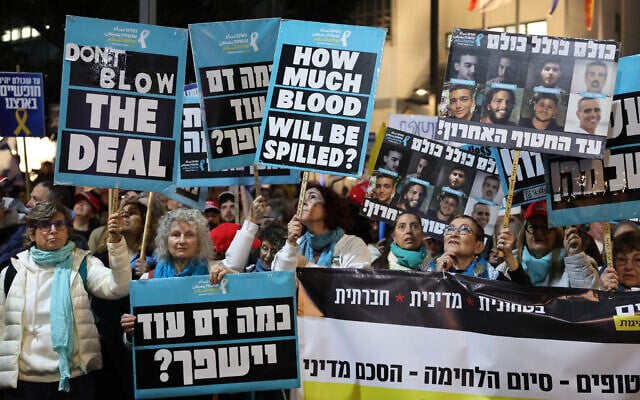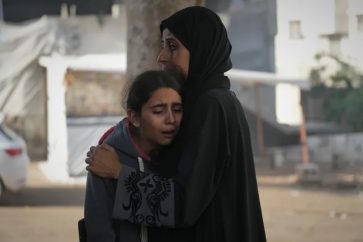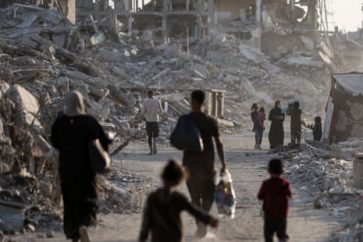The Gaza ceasefire agreement entered its 17th day on Tuesday, as all eyes turn to the outcome of Zionist Prime Minister Benjamin Netanyahu’s meeting with US President Donald Trump in Washington. The discussions are expected to influence the second phase of the ceasefire negotiations.
Netanyahu continues to adopt a strategy of ambiguity and maneuvering regarding the talks, a stance reflected in Israeli media reports. According to Maariv, citing security sources, Netanyahu is considering removing the Shin Bet chief from the negotiating team due to a lack of trust and is attempting to block the second phase of the ceasefire deal.
Meanwhile, the Israeli Public Broadcasting Corporation reported that Netanyahu’s office announced plans to send a delegation to Doha, Qatar next weekend for further negotiations.
Netanyahu is also set to hold a ministerial meeting upon returning from Washington to assess the deal’s status, with discussions expected to include Trump. His office described his meeting with US National Security Advisor Michael Waltz and special envoy Steve Witkoff as “positive.”
The former Israeli ambassador to the US told Army Radio that Washington is pushing for the second phase of the prisoner exchange agreement and is waiting for progress on a post-war plan for Gaza.
However, Avigdor Lieberman, leader of the “Yisrael Beiteinu” party, claimed that Netanyahu’s primary goal in Washington is to derail the second phase of the deal. He accused Netanyahu of prioritizing his political survival over national interests, stating that his only concern is preserving his governing coalition.
Hamas Ready for Next Phase
According to sources within the movement, Hamas has informed mediators of its readiness to begin negotiations on the second phase of the Gaza ceasefire agreement. A senior Hamas official told AFP that talks were scheduled to start on Monday, emphasizing that Hamas is prepared and fully committed to implementing the deal.
The second phase of talks will focus on securing a permanent ceasefire, preventing a return to war, and ensuring a full military withdrawal, including from the Philadelphia Corridor. Discussions will also address the terms for releasing Palestinian prisoners. Hamas stressed that its armed wing, Al-Qassam Brigades, along with other resistance factions, holds several high-ranking Zionist officers and soldiers captive.
The agreement also includes provisions for the continued entry of humanitarian aid into Gaza. This includes food, medicine, relief supplies, 200,000 tents, 60,000 caravans, materials to restore hospitals and water facilities, bakery operations, and fuel and heavy equipment for rubble removal and body recovery.
Meanwhile, Hamas spokesman Abdul Latif Al-Qanou reaffirmed the movement’s commitment to the agreement but warned that its implementation depends on the Israeli enemy fulfilling its obligations under the first phase. He accused the Zionist entity of deliberately delaying the entry of shelters and relief aid, calling it an attempt to pressure and break the will of the Palestinian people.
⚡️🇵🇸JUST IN:
32 trucks carrying tents and tarpaulins have entered the northern Gaza Strip.
This is less than 1% of what is needed, but it’s a start. More tents and aid must enter as soon as possible.pic.twitter.com/0IkS8m1PhO
— Suppressed News. (@SuppressedNws) February 4, 2025
“Hamas will not allow the Israeli enemy to obstruct relief efforts or sabotage the agreement,” he stated, adding that the group remains in constant communication with mediators to ensure ‘Israel’ abides by its commitments, particularly regarding humanitarian aid.
Al-Qanou described Gaza’s humanitarian crisis as a “new Nakba” caused by Israel’s failure to uphold the deal. He urged the international community and mediators to pressure Israel into complying with the ceasefire and ensuring aid reaches those in need.
Hamas Warns of Consequences
Senior Hamas official Osama Hamdan revealed that mediators have proposed measures to enforce the Israeli enemy’s compliance with the agreement, with further details expected soon. He warned that if the Zionist entity fails to meet its obligations, Hamas will take its measures.
“Our priority is a permanent end to aggression and Gaza’s reconstruction,” Hamdan emphasized.
🔴
Senior Hamas official Osama Hamdan: “The second phase of negotiations will be significant, as it will include the release of prisoners from all categories: Those serving life sentences, long-term prisoners, Hezbollah prisoners, and Nukh’ba fighters detained after October 7.” pic.twitter.com/EM3SZ67p0V— Voice From The East (@EasternVoices) February 4, 2025
Hamdan stated that the best approach for governing Gaza post-war is establishing a national unity government. Speaking at a political studies forum, he stated that if such a government cannot be established, Hamas remains open to any framework leading to a national administration for the enclave.
He also highlighted that the second phase of the ceasefire and prisoner exchange deal will be critical, as it involves negotiations on prisoners with life sentences, high-security detainees, Hezbollah captives, and those from Gaza arrested after October 7.
Regarding prisoners released under the “Operation Al-Aqsa Flood” deal who were deported, Hamdan confirmed that Hamas is in talks with several countries to host them. While the process may take time, he affirmed that a solution is underway.
Ceasefire Deal and Diplomatic Efforts
Mediated negotiations are set to resume, aiming for the release of all Israeli captives in Gaza and an end to the war. The three-phase ceasefire and prisoner exchange agreement stipulates a halt in hostilities and the withdrawal of Israeli occupation forces from populated areas.
The first phase, lasting six weeks, includes the release of 33 Zionist prisoners (excluding Thai nationals) in exchange for approximately 1,900 Palestinian detainees.
Later this week, US envoy Steve Wietkoff is scheduled to meet with Qatar’s Prime Minister and senior Egyptian officials involved in mediation efforts. Meanwhile, on February 11, US President Donald Trump is set to host Jordan’s King Abdullah II as part of ongoing discussions.
On Sunday, Trump stated that negotiations involving “Israel” and other regional players were making progress. He added that Netanyahu’s visit to Washington includes “major meetings,” with Israel-Saudi normalization being a key agenda item.
Netanyahu’s Priorities: Securing Political Survival Over Gaza Talks
Israeli Channel 13 reported that during his meeting with US’ Donald Trump, Zionist PM Netanyahu aimed to secure more time to maintain his governing coalition. According to the report, Netanyahu intends to stress that confronting Iran is a higher priority than advancing the second phase of Gaza ceasefire negotiations.
The Israeli broadcaster noted uncertainty over Netanyahu’s commitment to the Gaza agreement, suggesting he plans to propose a shift in Middle East priorities during his talks with Trump.
Meanwhile, The Washington Post, citing a Zionist official, reported that Netanyahu is seeking assurances from Trump that Hamas will not be part of Gaza’s future. The same official claimed that the new US administration is focused on a different regional goal—ending the conflict in Gaza—while discussions about striking Iran are no longer on the table.
Before his meeting with Netanyahu, Trump stated that there are “no guarantees” the Gaza ceasefire will hold. However, his special envoy to the Middle East, Steve Wietkoff, who was seated beside him, quickly added that the truce “remains in place for now,” expressing hope that more hostages will be released and that a peaceful resolution will be achieved.
Notably, Netanyahu, who arrived in Washington on Sunday, is the first foreign leader to be received by Trump since his inauguration.
Source: Al-Manar Website




